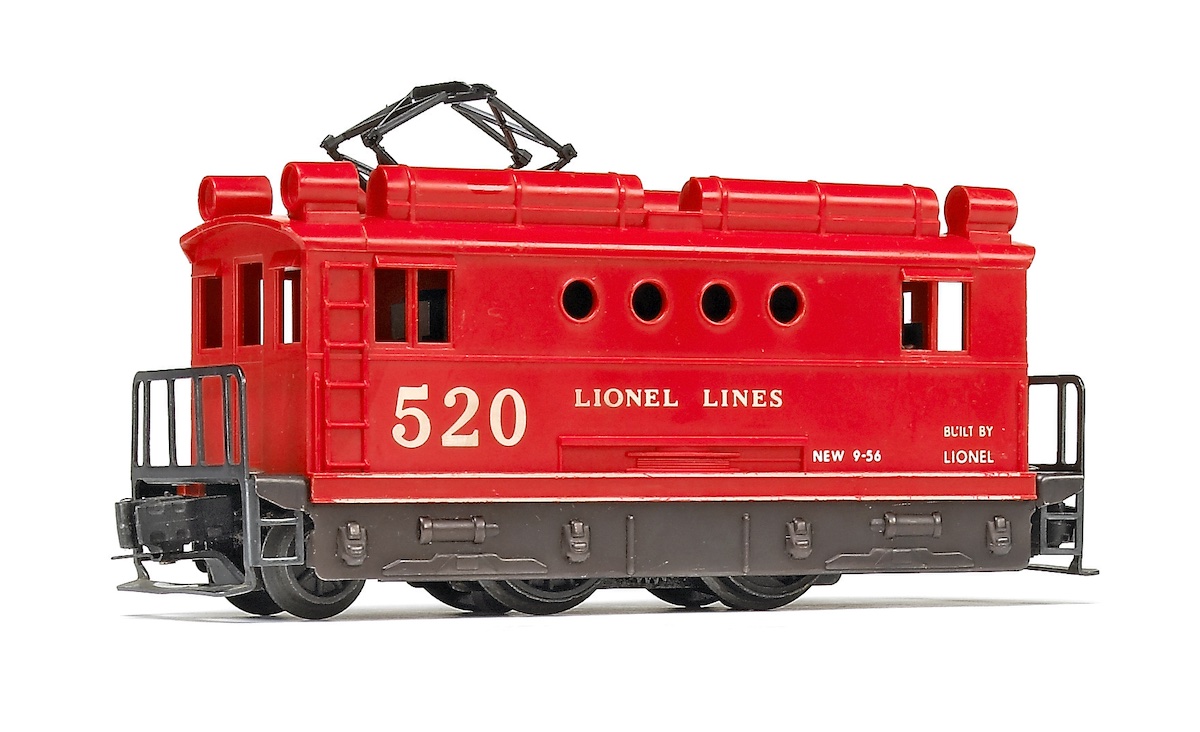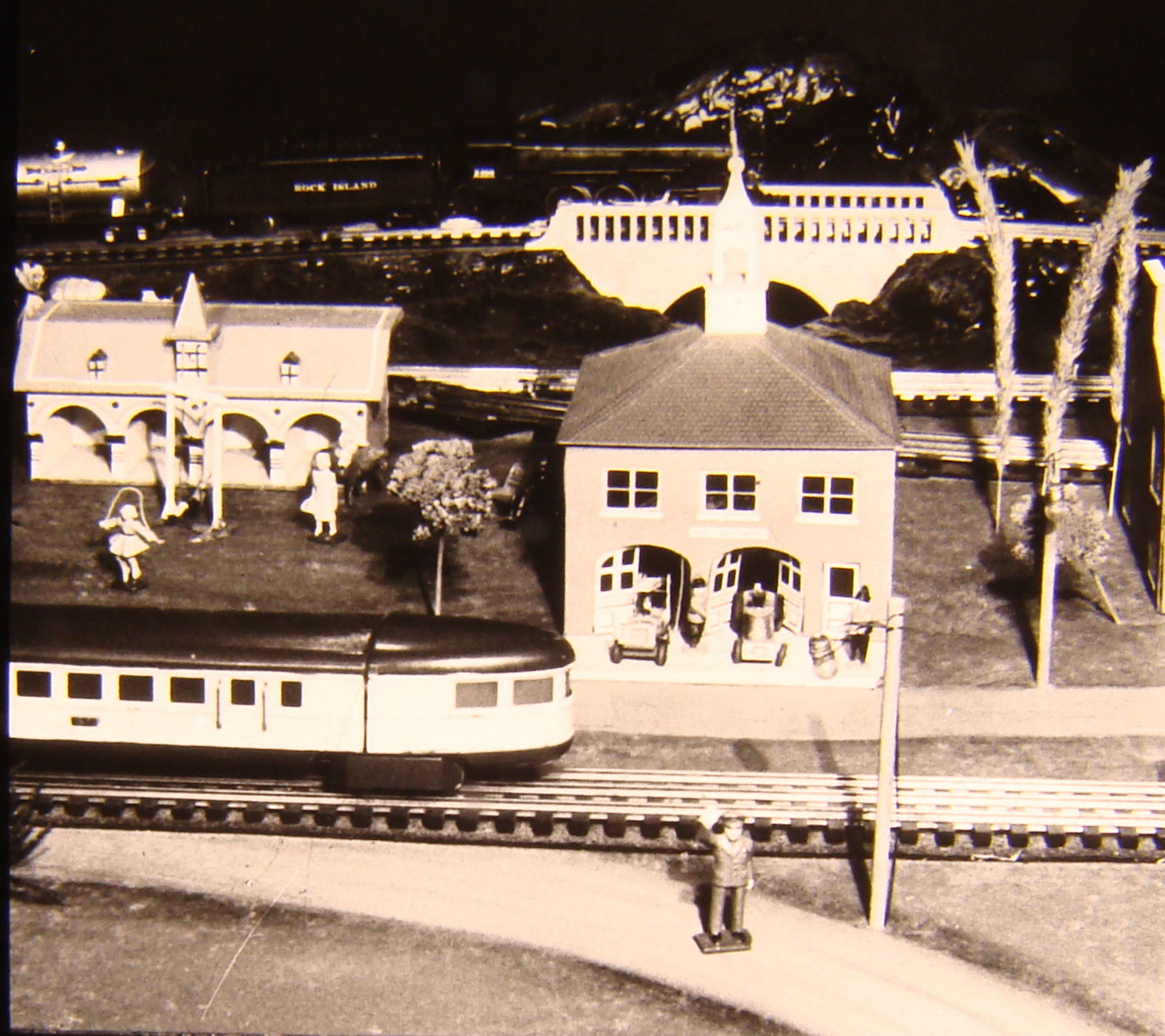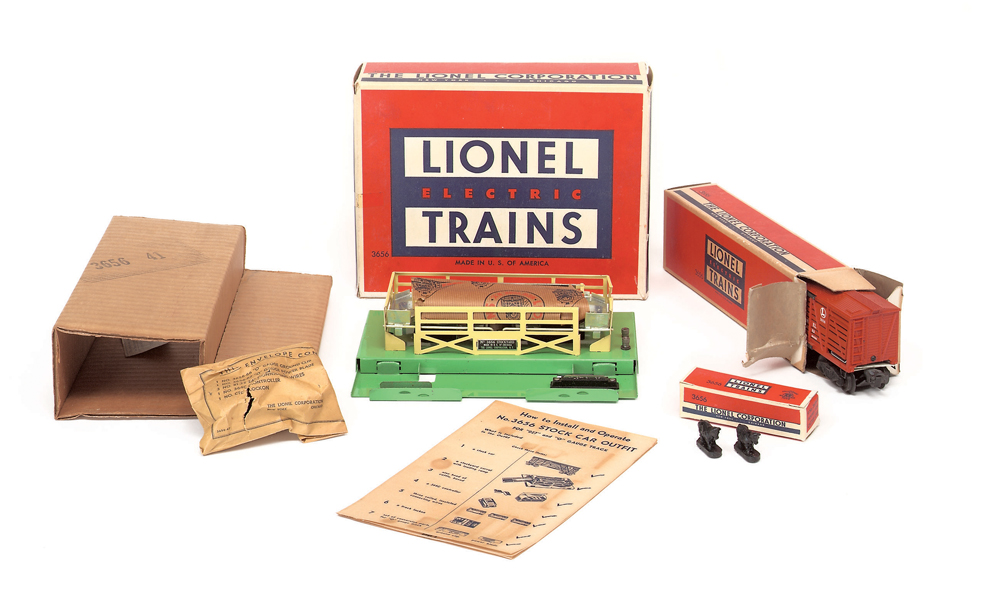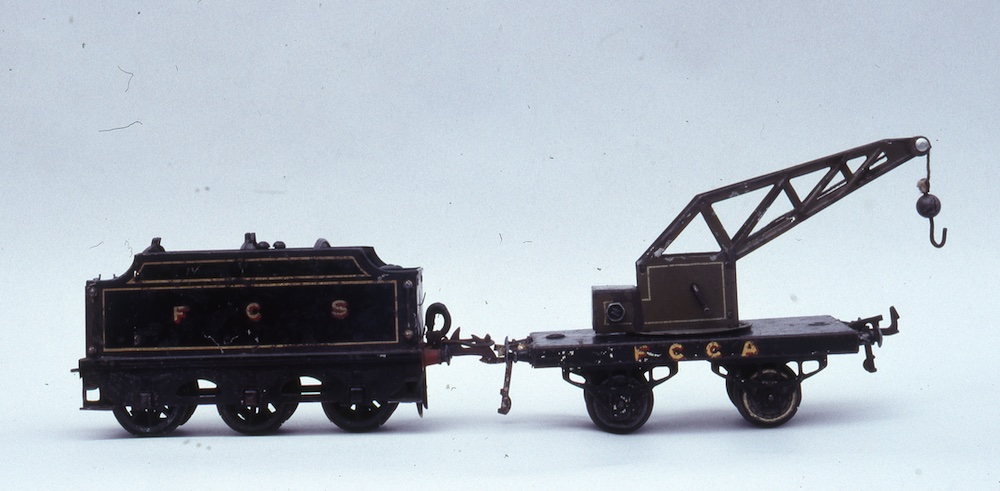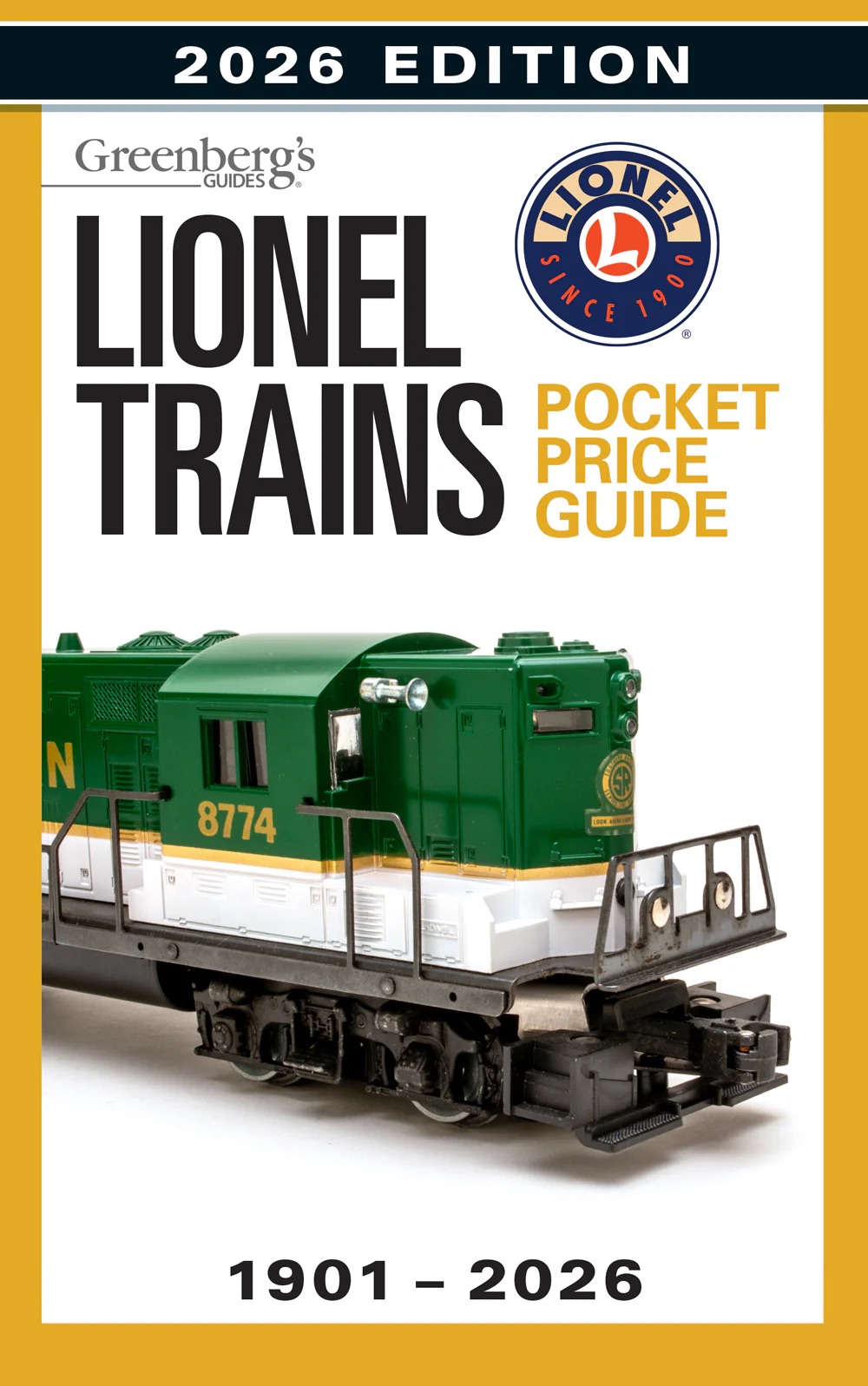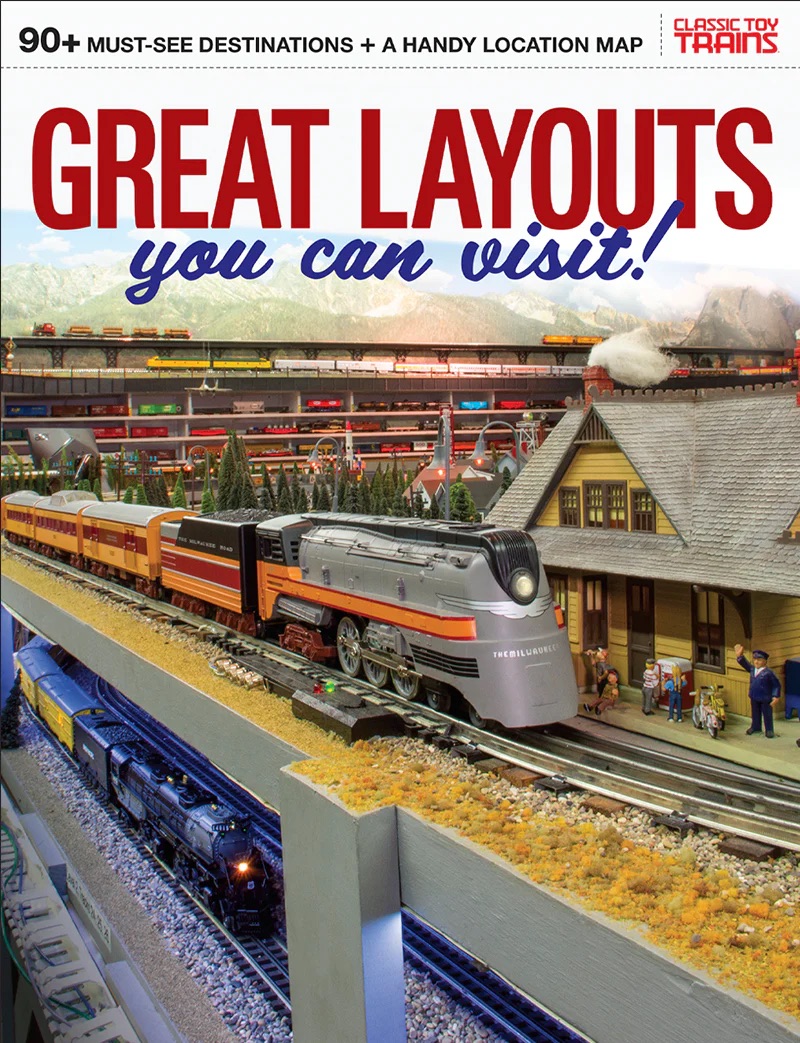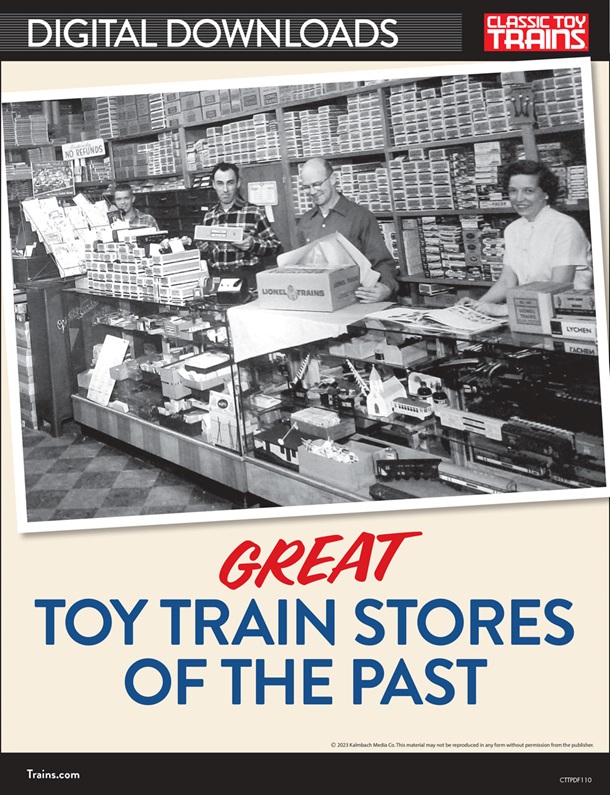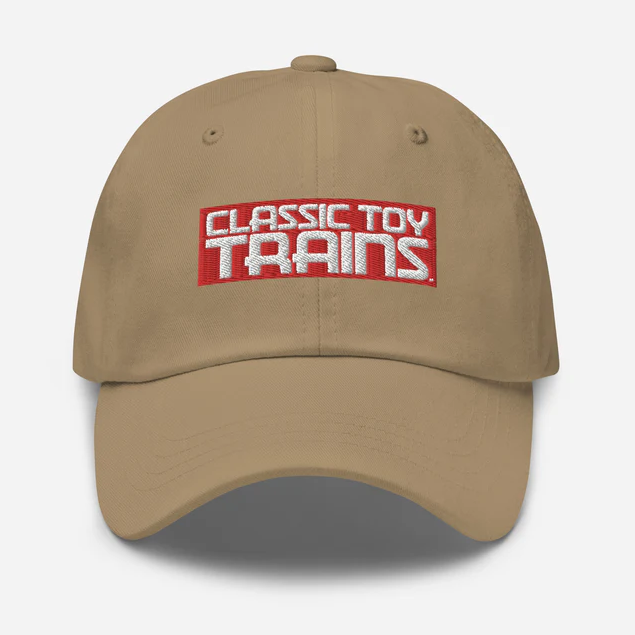Lionel’s No. 2159W GG1 Freight Set for 1950 often has received criticism from collectors for being less than outstanding. In fact, this O gauge outfit generally has been assessed as a disappointment because it came with some common items.
Admittedly, the locomotive included with the five pieces of rolling stock outshines these freight cars and caboose. Decision makers at Lionel should have done more to spruce up various outfits during its golden anniversary year of 1950.
Nevertheless, the 2159W seems in retrospect to have been targeted a bit unfairly. Considering what sorts of freight cars and operating models filled out the O gauge roster in 1950, Lionel appears to have assembled an outfit promising lots of play value and enjoyment to youngsters fortunate enough to have received it.
Favoring locomotives
The year 1950 was a significant one for Lionel, then the preeminent manufacturer of miniature electric trains in the U.S. if not the world. Executives, led by Joshua Lionel Cowen, who had co-founded the business, looked forward to celebrating the firm’s golden anniversary. They planned civic events and company-wide festivities, along with the release of an outstanding line of O and O-27 trains.
Dampening the enthusiasm of decision makers and leaving a negative impact on the product line were events reverberating from the outbreak of a military conflict in Korea. Engineers and production managers had no choice but to cut back on what could be offered and then prepared for mass production.
All the same, the previous five years had seen great steps ahead made regarding O gauge locomotives. Designers had worked diligently to bring out an outstanding roster of brand-new models of steam, electric, and diesel locomotives. They had collaborated with railroads and locomotive builders to develop a host of newcomers, notably a Berkshire and a Turbine plus a GG1 and F3 and NW2 diesels. Every year between 1949 and 1949, there had been a brand-new unit.
Putting emphasis on locomotives had resulted in less attention being paid to non-operating types of freight cars. There were excellent new operating cars, in particular the path-setting automatic milk car and then the noisy animated cattle car. They promised plenty of fun, as did updated versions of the coal and log dump cars Lionel originally introduced in the final years before World War II.
But Chief Engineer Joseph Bonanno and his talented staff of designers had seen fit to emphasize new locomotives following the war. They could install on the big steam engines the popular smoke mechanism while proclaiming to be the leader in bringing out replicas of contemporary diesel cab units and switchers.
More improvements
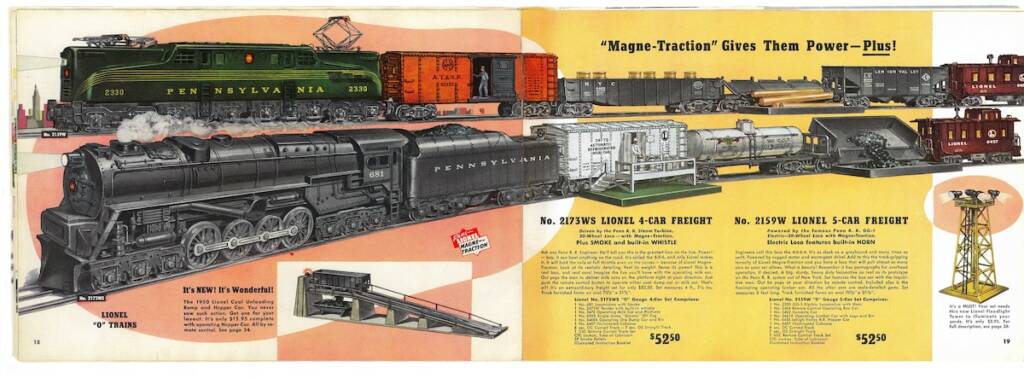 The parade of innovations surrounding Lionel locomotives hardly ceased in 1950. For the company’s golden anniversary, engineers finalized an important innovation sure to improve the performance of every locomotive, regardless of what it replicated. Magne-Traction guaranteed that an engine would stay on the track more securely at higher speeds and through twisting curves. Steamers and diesels alike would be capable of climbing steeper grades and then descending.
The parade of innovations surrounding Lionel locomotives hardly ceased in 1950. For the company’s golden anniversary, engineers finalized an important innovation sure to improve the performance of every locomotive, regardless of what it replicated. Magne-Traction guaranteed that an engine would stay on the track more securely at higher speeds and through twisting curves. Steamers and diesels alike would be capable of climbing steeper grades and then descending.
Consequently, Lionel was able to proclaim a newer and better version of its celebrated GG1 for 1950. The No. 2330 came with two powerful motors as well as Magne-Traction. A buzzing horn warned away other trains and vehicles.
Of course, the Pennsylvania RR GG1 was far from the only locomotive Lionel had updated. The 2-8-4 Berkshire and 6-8-6 Turbine now came equipped with Magne-Traction while the 4-6-4 Hudson and tender returned as the No. 773. As for diesels, the New York Central and the Santa Fe F3s boasted stronger motors as well as Magne-Traction even if a few tiny details had been removed.
Creating sets
Executive Vice-President and National Sales Manager Arthur Raphael as well as his top assistant, Samuel Belser, were responsible for creating outfits to fill out the cataloged lineup. They were charged with taking various locomotives and pairing them with assortments of operating and non-operating rolling stock to make sets to be sold at different prices in the range they and other leaders chose.
To get down to specifics, for 1950 Raphael and Belser had three steamers and two versions of the same diesel at their disposal. In addition, they had the updated GG1 to use in developing a lineup of sets priced from $39.95 to $85.
Paging through the consumer catalog Lionel released in the early autumn of 1950, we discover the new No. 681 Turbine pulling two freight sets and one passenger train. The Nos. 736 Berkshire and 773 Hudson led one of each type.
Equally as impressive, the Nos. 2343 and 2344 improved versions of the Santa Fe and the New York Central A-A combinations of powered and non-powered F3 diesels each headed two outfits. The contents of those two sets varied. Together, kid and adults had 11 different O gauge sets to drool over.
And a 12th set
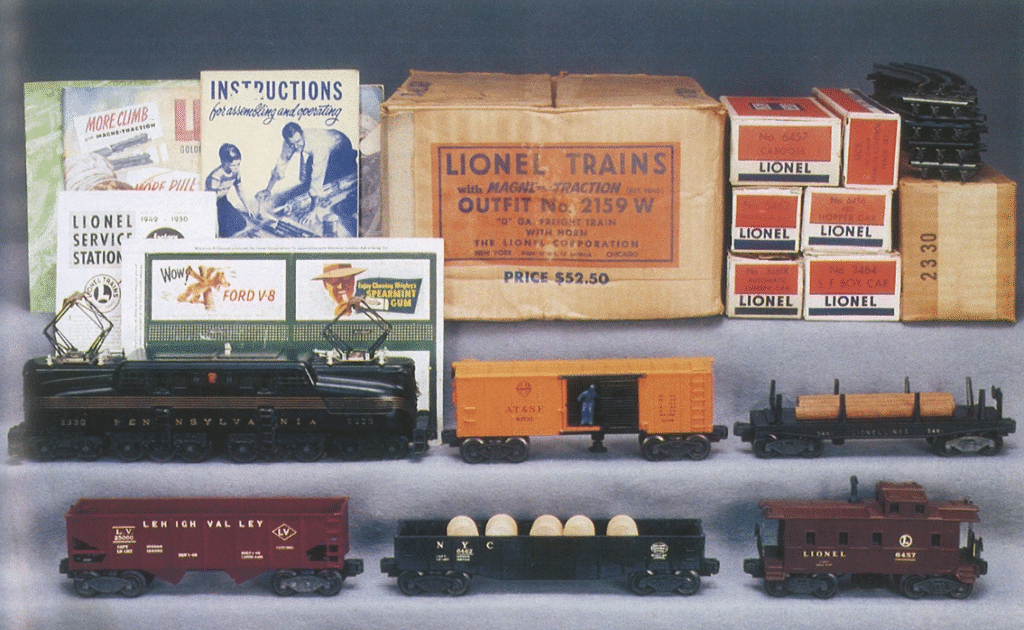
The broad and impressive group of O gauge outfits for Lionel’s 50th anniversary didn’t end quite yet. There was in fact a twelfth set — the 2159W.
Top management wisely assembled that outfit with the newly modified 2330 GG1 on the point. Then the question facing them was what to use with the two-motored powerhouse with a Brunswick green body and five gold stripes.
Paul V. Ambrose, the author of the third volume of Greenberg’s Guide to Lionel Trains, 1945-1969, describes the rolling stock as “all common issue.” He reaches this conclusion after looking over the five items packed with set 2159W: Nos. 3461 Operating Lumber Car with bin, 3464 Remote Control Operating Boxcar, 6456 Lehigh Valley Hopper Car, 6462 New York Central Gondola Car, and 6457 Lionel Southern Pacific-type Caboose with interior illumination.
To be sure, none of the five models was making its debut in 1950. Yet three of them had been introduced just one year earlier: the operating boxcar, the gondola, and the deluxe caboose. Further, each of those three was a top-of-the-line piece, with the gondola being a near-scale replica that showed the direction Lionel’s engineering and sales teams would lead the firm in the coming years.
The boxcar and log dump car featured remote-control animation, a trait all but guaranteeing pleasure for operators of any age. Even the open hopper looked rugged and modern. So, the contents of the set really were outstanding and fun.
The complaint that the rolling stock was “disappointedly very common” makes sense only when the freight cars are compared against their longer and more realistic counterparts introduced later in the decade. At the time of Lionel’s special anniversary, there were truly outstanding models. Not quite up there with the automatic milk car or the work caboose with a floodlight, perhaps, but still excellent in appearance and operation. They complemented the updated GG1; together, they represented a top-quality set with a reasonable price of $52.50.






